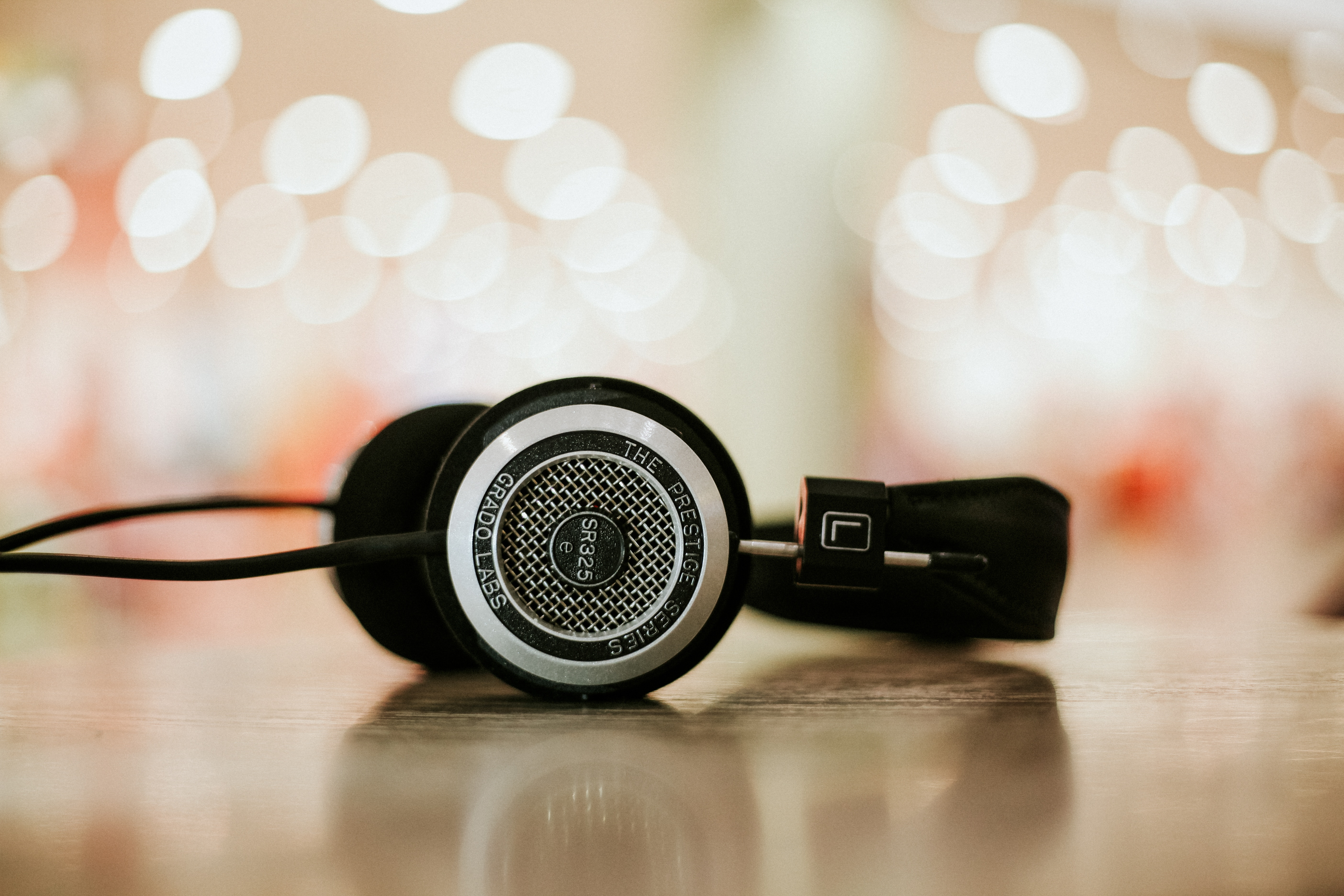I had the pleasure of being part of a really interesting panel discussion on the future of audio at INM’s Business of Podcast conference alongside Eric Nuzum, media consultant, former SVP Audible Original Content and VP Programming, NPR, Taz Kelleher, Podcast Producer and Fergus Ryan, Wolfgang Digital.
Here’s some thoughts on why the future of audio matters to marketers.
At its simplest, those involved in marketing are in the business of creating and sustaining relationship between people and things. As things are non-sentient, voice and audio are proven powerful connection devices for a number of reasons.
- Voice is an enabler of learning. As forms of communication go, voice is one of the most effective and efficient ways to express what we want, what we desire and what we want to happen next. Research confirms we hear things before we see them and if anyone doubts how important audio is in learning you just need to think of how a baby can hear its mother’s voice and heartbeat in the womb and how after birth are immediately comforted by both sounds as they already equate them with safety and contentment.
- Voice eases the load of communication. Simply put, it’s more efficient. We speak three times faster than we type. As Taz said in the discussion voice allows us to multi-task when our hands and eyes are otherwise occupied, hugely valuable in a time of partial attention.
- Audio and voices have personality that connects powerfully with human emotions and for that reason is not just intimate but persuasive.
We have an existing and longstanding relationship with audio
It’s important to consider that people already have a healthy relationship with audio. Radio still has the greatest share of ear in Ireland. More than 3 million Irish adults listen to radio on average every day, almost 1 million 15-34 year olds. Running in tandem, we have witnessed huge growth in podcast consumption with a recent Reuters research report revealing two-in-five news consumers in Ireland listened to a podcast within the past month.
The headroom for growth is considerable and as podcast listeners are highly engaged, information driven audiences, they are highly attractive to brands. UK research from Maple Street Creative adds a general demographic profile to podcast listeners with research findings that indicate that:
- Three quarters educated to degree level.
- 83% earn above the average wage.
- 42% describing themselves as business decision makers.
Engagement levels are also high. We operate in a marketplace where people consume digital video for an average of 18 seconds, the majority with the sound on mute, making video subtitles a functional mandatory. However, people listen to a podcast for on average 22 minutes.
How brand’s have responded to the rise and rise of Podcasts
Not to over-simplify it but to date the response has been two-fold, one in the form of content advertising and sponsorship and secondly with branded podcast creation.
Native advertising via audio-based mediums can be complicated, as you don’t have the same visual cues to distinguish ads from content. After coming under fire from the New York Times, Gimlet Media a leading global content creator led the move to use a set piece of music as the intro and outro to any ad across any of the shows in their network.
Edelman’s approach to Diet Coke’s sponsorship of Before Brunch on Lovin Dublin4 was seamless but transparent integration. Edelman secured the sponsorship because it offered the right content and audience fit with Diet Coke’s Because I Can Series, an Edelman curated host of experiences to inspire consumers to take full advantage of the things and moments that give them pleasure. We felt the series could add real value to the show’s existing content approach and the Lovin Dublin platform offered the right amplification platform to support audience discovery. In addition to which we used the iconic sound of opening a can of Diet Coke to create guardrails around the sponsorship support message from the podcast hosts.
From a straight up advertising perspective, host read ads feel instinctively more appealing than taking traditional advertising audio formats into podcasts. Not least because hosts can infuse their own personality and content approach into delivering the message but also because there is powerful implied endorsement. There are great examples globally of what good can look like in this regard, Mailchimp’s product placement content on Serial5 being one, all advertising on Jonathan Van Ness Getting Curious6 being another.
The other way brands have engaged with content is through the development of branded podcasts. In my experience this is an approach only for committed and content-rich brands and my favourite is from Penguin UK. In order to create greater cut through for Tim Weaver’s new book, MISSING, Penguin7 created an eight-part podcast drama centred around the core question ‘Is it possible to disappear? Each episode focused on a different topic, with Tim Weaver leading conversations with a variety of expert guests, from academics to hackers and criminal psychologists.
The podcast was an instant success, with over 650,000 listeners to date. The popularity has resulted in considerable earned media coverage and social conversation, with the podcast now embedded in over 200 different websites.
How brands are navigating the known unknowns in the future of voice
“The difference between 95% and 99% word recognition accuracy is the difference between occasional, novel use and using technology all the time”.
Andrew Ng, computer scientist, entrepreneur and former Google and Baidu employee.
Smart speakers are getting smarter and their recognition of spoken word has reached a similar level of accuracy as human, which fundamentally shifts the paradigm of what new normal is. In the past we’ve always had to adapt to technology, but voice is fast changing this and for the first-time tech has adapted to us.
A great example of harnessing the power of voice technology is IBM Watson launch in Brazil8. A study by the Brazilian Institute of Economic Research, found that 72 percent of Brazilians have never been inside a museum. The reasons for this are many, including the feeling that art can seem unapproachable unless you’re exposed to it and understand it.
For the launch, Ogilvy Brazil gave art a voice through the creation of a unique interactive guide. The Voice of Art let people have conversations with work housed at the Pinacoteca de São Paulo Museum. Educated from books, interviews, newspapers old and new, and the internet. Users could question both technical aspects of the painting, they could also ask about contemporary and cultural events that informed the art.
Other brands pushing the boundaries of convention using audio and voice include:
Barbie Hello Dreamhouse
Mattel’s wifi enabled Barbie Hello Dreamhouse8 that responding to voice commands to inspire limitless storytelling and play for children.
Hello Dreamhouse responds to your directions with lights, sounds and motors. Floor and feature switches in each room bring stories to life. My five year old me is very jealous.
AIA – Open Aiya. The first voice led panic system10
In Vietnam, the insurance company AIA has created a smartphone app called Open Aiya (based on the Vietnamese word for’Help’), which uses Siri’s always-on software to provide a voice-activated panic system that alerts up to five loved-ones and emergency services. By saying “Hey Siri, open Aiya,” the app will activate.
Marketing considerations for the future of audio and voice
1.Maintaining brand discoverability and visibility
Voice search has huge benefits for the consumer immediately removing an element of the multi-tasking friction that exists today, but for brands it has implications. No-one wants their voice assistant to read out a full page of search results. As a result, the assistant will only curate a handful of top hits. So how can brands ensure they are in the top two, because if you are in third or fourth place you’re in a position of risk. In addition to which, paid opportunities in voice are only emerging, so what do brands do in the meantime.
One approach is to take a cue from the conversational and questioning nature of human interactions with voice technology and optimise your content to reflect it11. This does not mean the abandonment of key words, particularly in the short terms, but there could be a real benefit in piloting phrases that reflect the way we speak as smart speakers and new technology hardware become more mainstream.
2. Relevance in the moments that matter to people is still crucial
For a simple but effective masterclass in how using micro moments explodes how useful a brand can be using voice technology check out the Tide – Stain Remover Alexa skill12, that helps you tackle tough stains like coffee, ink, and wine in the moment it happens at home. Simply ask Alexa and she’ll give you step-by-step instructions on how to get stains out for good brought to you by the expert in stain removal, Tide.
3. Is voice your new distinctive brand asset?
As marketers, we lean heavily on our brand benefits, values and distinctive assets to navigate the world and connect with our consumers. Will creating a distinctive brand voice that supports instant audio recognition and helps you forge emotional bonds with your audience to support consideration and purchase intent be the next logical step
Perhaps when considering the future of audio, the simple answer as a colleague told me yesterday, is audio.
Written by Fiona Hodgins, Director, Edelman
Fiona.hodgins@edelman.com
@Fihodgins
Source citations


